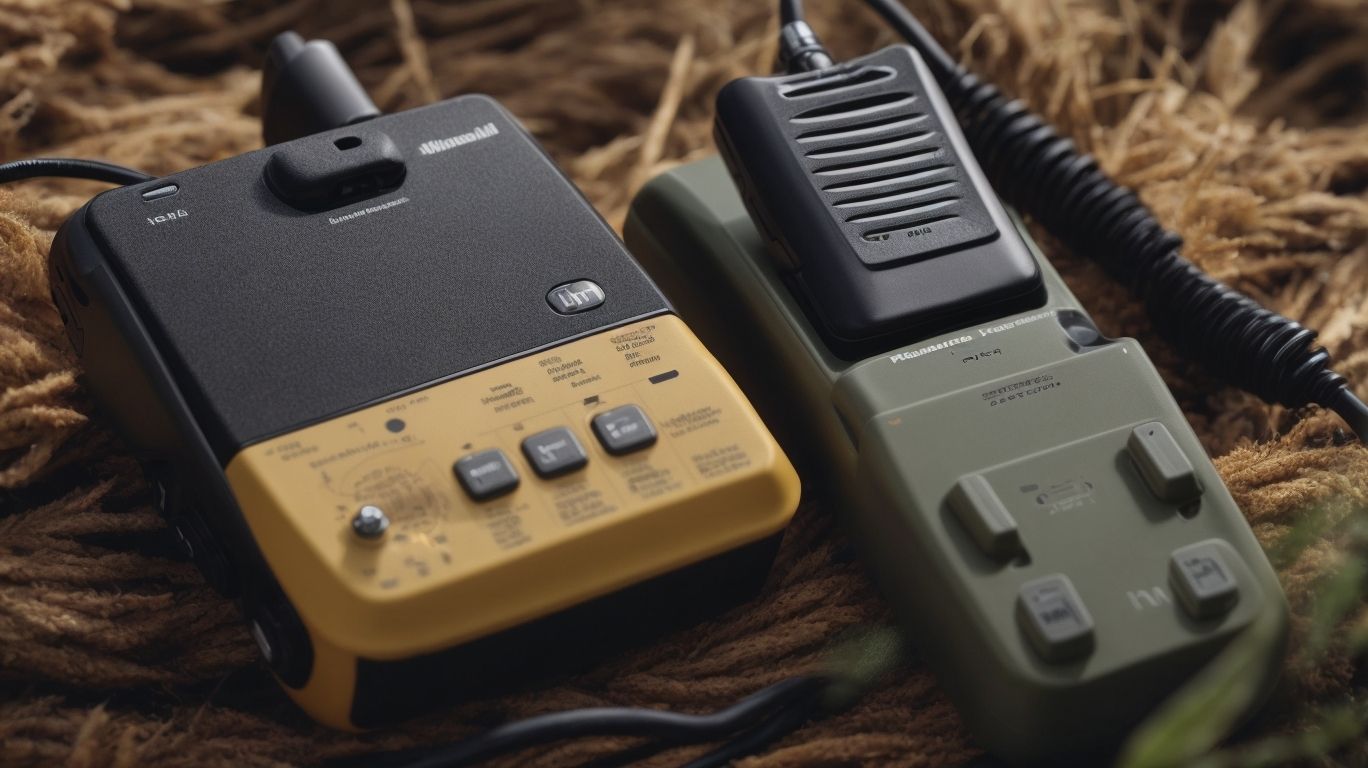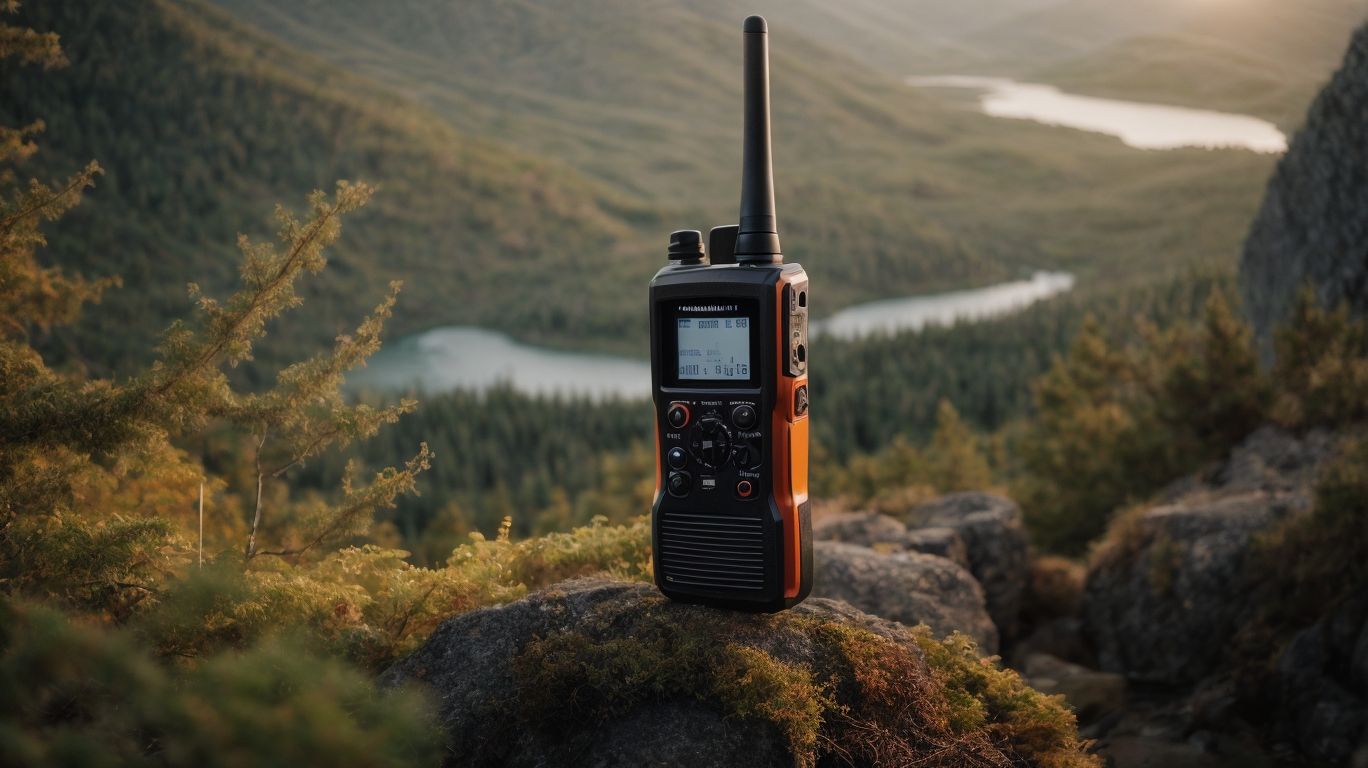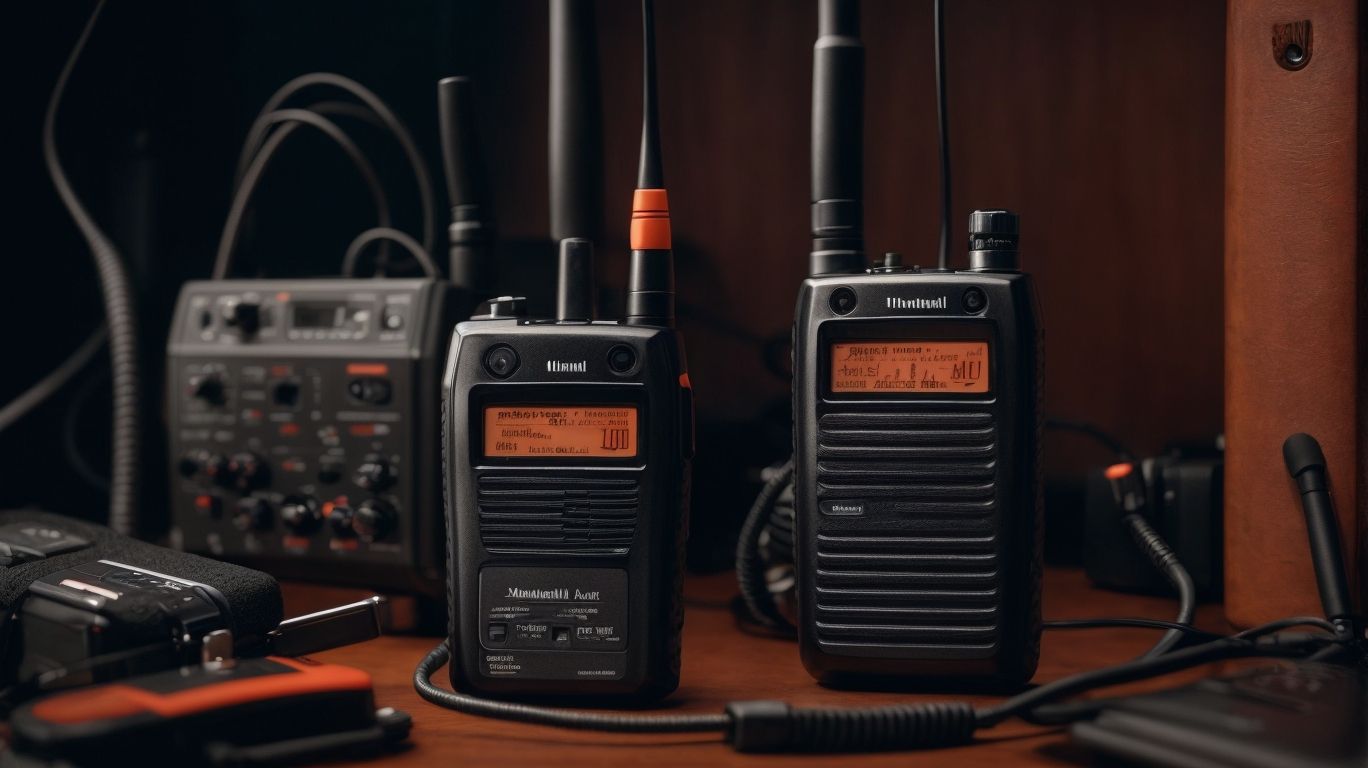.jpg)
In the world of communication, VHF/UHF two-way radios play a crucial role in providing reliable and efficient means of wireless communication. Whether you’re a beginner or looking to learn more about VHF/UHF two-way communication, this beginner’s guide has got you covered.
VHF/UHF two-way communication refers to the transmission and reception of radio signals using very high frequency (VHF) and ultra high frequency (UHF) bands. These two frequency ranges offer unique advantages and applications in various industries.
VHF operates in the range of 30 MHz to 300 MHz, while UHF operates in the range of 300 MHz to 3 GHz. Understanding the differences between VHF and UHF is essential to make informed decisions about the right equipment for your communication needs.
VHF provides enhanced coverage and range, making it suitable for open areas and outdoor environments. On the other hand, UHF offers better penetration through obstacles and is suitable for indoor use and urban environments.
There are numerous benefits and applications of VHF/UHF two-way communication. Enhanced coverage and range allow for long-distance communication, while clearer audio quality ensures effective communication even in noisy environments. The versatility of VHF/UHF two-way radios makes them applicable in industries such as public safety, construction, hospitality, and more.
Choosing the right VHF/UHF two-way radio involves considering various factors such as your communication needs, frequency range, power output, and additional features and accessories. Understanding the channels and frequency bands is also crucial to ensure efficient communication without interference.
To ensure effective communication, it is essential to practice proper radio etiquette and learn effective communication techniques. Maintaining and caring for your two-way radio will prolong its lifespan and ensure optimal performance.
Finally, troubleshooting common issues such as interference, range limitations, and battery life management will help you overcome potential challenges and make the most out of your VHF/UHF two-way communication system.
By learning the basics and implementing best practices, you’ll be on your way to mastering VHF/UHF two-way communication and leveraging its benefits in various professional and personal settings.
Key takeaways:
- Understanding VHF and UHF: VHF operates on a lower frequency and is better for long-distance communication in open areas. UHF operates on a higher frequency and is suitable for short-range communication in urban or obstructed environments.
- Benefits of VHF/UHF Two Way Communication: It offers enhanced coverage, clearer audio quality, and a wide range of applications including public safety, disaster response, and professional business communication.
- Choosing the Right Two Way Radio: Consider your communication needs, frequency range, power output, and additional features and accessories to ensure you select the most suitable radio for your requirements.
What is VHF/UHF Two Way Communication?

Photo Credits: Hrw.Hstng.Dev by Bradley Rodriguez
VHF/UHF Two Way Communication: The key to seamless communication. Discover the power of VHF and UHF frequencies in this guide. Unveiling the wonders of VHF, we’ll explore its unique characteristics and applications. Next, dive into the realm of UHF, and uncover its widespread use and advantages. Get ready to unravel the secrets of VHF/UHF two way communication that will revolutionize the way you connect and communicate. Let’s embark on this enlightening journey together!
Understanding VHF
VHF stands for Very High Frequency and refers to the range of radio frequencies from 30 MHz to 300 MHz. Understanding VHF is important when it comes to two-way communication. It is commonly used for line-of-sight communication, making it suitable for outdoor activities such as hiking, camping, and boating. VHF radios have a longer wavelength, which allows the signals to travel longer distances. They are not as effective in densely populated urban areas. It is crucial to familiarize yourself with VHF frequencies and their capabilities when choosing a two-way radio for your specific communication needs.
Unlock the mysteries of UHF and gain a new level of communication power.
Understanding UHF
UHF, or Ultra High Frequency, is a range of electromagnetic waves used in two-way communication systems. It operates between 300 MHz and 3 GHz, making it ideal for various applications. Understanding UHF is essential for effective communication.
Spectrum: UHF waves have shorter wavelengths, allowing them to penetrate obstacles and buildings better than VHF waves.
Interference: UHF signals are less prone to interference from other devices, ensuring clearer communication.
Licensing: UHF radios usually require licensing due to their higher power output and potential for wider communication range.
Applications: UHF is commonly used in urban areas, construction sites, and large buildings where obstacles may affect signal transmission.
Understanding UHF helps in choosing the right two-way radio for specific communication needs and ensuring reliable and efficient communication.
Listen up, folks! VHF/UHF Two Way Communication: When texting just won’t cut it.
Benefits and Applications of VHF/UHF Two Way Communication

Photo Credits: Hrw.Hstng.Dev by Russell Flores
Looking to amplify your communication capabilities? Discover the incredible benefits and diverse applications of VHF/UHF two-way communication. From enhanced coverage and extended range to crystal-clear audio quality, this technology is revolutionizing communication in various industries. Whether you’re exploring emergency response scenarios, construction sites, or even recreational activities, VHF/UHF two-way communication has got you covered. Get ready to explore the endless possibilities and unleash the power of seamless and reliable communication.
Enhanced Coverage and Range
“`
Enhanced coverage and range are the key benefits of VHF/UHF two-way communication, making it well-suited for a variety of applications.
- VHF/UHF wavelengths enable signals to travel longer distances, resulting in broader coverage. This makes them particularly beneficial for outdoor areas and rural environments.
- UHF signals have excellent penetrating capabilities, making them highly effective indoors or in urban settings with concrete structures.
- With higher power outputs and efficient antennas, VHF/UHF radios can provide extended range, ensuring communication even in remote locations.
- VHF/UHF systems offer improved signal strength, resulting in fewer dead zones or areas with weak signals. This ensures reliable communication across the entire coverage area.
To optimize coverage and range, it is important to consider factors such as terrain, antenna height, and potential interference that may impact signal strength.
Clearer Audio Quality
To ensure clearer audio quality in VHF/UHF two-way communication, there are several important factors to consider. First and foremost, it is crucial to invest in a high-quality VHF/UHF two-way radio that incorporates advanced audio processing technology. This technology is essential in providing superior sound clarity during communication.
Another significant consideration is the presence of noise-cancelling features in the radios. Look for radios that come with built-in noise-cancelling capabilities such as background noise filters or voice-activated squelch. These features work effectively in reducing static and unwanted interference, resulting in clearer audio transmission.
To further enhance audio clarity, it is advisable to utilize audio accessories such as headsets or earpieces with noise-cancelling capabilities. These accessories prove to be invaluable, especially in noisy environments where background noise can hinder communication.
Proper microphone usage is also crucial in ensuring clear and articulate communication. Educate users on the importance of utilizing the microphone correctly, holding it close to the mouth for optimal sound transmission.
Additionally, regular maintenance of the two-way radio is vital for preventing any audio disruptions caused by dust, debris, or faulty connections. Ensure that the radio is regularly cleaned and maintained to guarantee uninterrupted audio quality.
By taking these factors into account, you can significantly improve the audio quality of VHF/UHF two-way communication. Investing in a high-quality radio with advanced audio processing technology, utilizing noise-cancelling features and audio accessories, promoting proper microphone technique, and engaging in regular radio maintenance are all critical steps toward achieving clearer audio quality.
Wide Range of Applications
VHF/UHF two-way communication offers a wide range of applications in various industries and sectors, making it a versatile and indispensable communication solution.
- Emergency services such as police, fire departments, and paramedics greatly rely on VHF/UHF radios to effectively coordinate response efforts and ensure public safety.
- In construction sites, two-way radios are used by workers to enhance safety and optimize efficiency in large-scale construction projects.
- VHF/UHF communication plays a vital role in the transportation industry, enabling airlines, shipping companies, and logistics providers to seamlessly coordinate operations and receive real-time updates.
- Event management professionals depend on two-way radios to guarantee smooth and uninterrupted communication among staff members during concerts, sports events, and conferences.
- The hospitality industry, encompassing hotels, restaurants, and resorts, makes use of VHF/UHF radios to facilitate effective communication across expansive properties and ensure exceptional customer service.
Don’t get caught in the wrong frequency, choose your VHF/UHF two-way radio wisely!
Choosing the Right VHF/UHF Two Way Radio

Photo Credits: Hrw.Hstng.Dev by Billy Green
Are you ready to dive into the world of VHF/UHF two-way radios? In this section, we will guide you through the process of choosing the perfect radio for your communication needs. From determining your requirements to considering frequency range and power output, and exploring additional features and accessories – we’ve got you covered. Let’s navigate through the key factors and find the best VHF/UHF two-way radio that will keep you connected in any situation.
Determining Your Communication Needs
To determine your communication needs for VHF/UHF two-way communication, evaluating the following factors is crucial: Range, Environment, Usage, Features, and Budget. Without considering these factors, it may be difficult to make an informed decision and select the appropriate VHF/UHF two-way radio for your specific communication requirements.
Considerations for Frequency Range and Power Output
When selecting a VHF/UHF two-way radio, it is essential to take into account considerations for the frequency range and power output to ensure effective communication. Here are some key factors to keep in mind:
- Frequency Range: It is important to determine the required frequency range for your specific communication needs. VHF radios operate within the range of 30 MHz to 300 MHz, while UHF radios operate within the range of 300 MHz to 3 GHz.
- Power Output: The power output of the radio should be considered as it directly impacts the coverage range. Radios with higher power output provide a wider coverage area, but they may also be susceptible to more interference.
- Interference: Any potential interference that may affect communication should be taken into account. Factors such as obstacles, buildings, and other radio signals can influence the effectiveness of the radio’s frequency range.
Remember, by considering the appropriate frequency range and power output for your VHF/UHF two-way radio, you can ensure clear and reliable communication within your desired range.
Fact: VHF frequencies are typically used for long-range communication, while UHF frequencies are better suited for short-range communication and indoor use.
Accessorize your two-way radio like a boss with these additional features and accessories that will make your communication experience even more amazing!
Additional Features and Accessories
When choosing a VHF/UHF two-way radio, it’s important to consider additional features and accessories that can enhance your communication experience. Here are some options to consider:
- Headsets: Use headsets for hands-free communication, making it easier to multitask.
- External Speakers: These can improve audio quality, especially in noisy environments.
- Remote Speaker Microphones: These allow you to keep your radio securely fastened while still being able to transmit and receive messages.
- Extra Batteries: Having spare batteries ensures that your radio doesn’t run out of power during longer usage.
- Carrying Cases: Protect your radio from damage while on the go with durable carrying cases.
Considering these additional features and accessories will help you customize your VHF/UHF two-way communication experience to suit your specific needs.
Understanding VHF/UHF Two Way Radio Channels

Photo Credits: Hrw.Hstng.Dev by Kenneth Baker
When it comes to VHF/UHF two-way radios, understanding the different channels is vital. In this section, we’ll dive into the world of VHF/UHF radio channels and explore two important aspects: frequency bands and usage, as well as channel spacing and interference. You’ll discover the significance of these elements, and how they impact communication in various settings. Get ready to navigate the airwaves like a pro as we uncover the ins and outs of VHF/UHF radio channels.
Frequency Bands and Usage
The utilization of frequency bands in VHF/UHF two-way communication has a significant impact on the radios’ range and coverage. The provided table illustrates a comprehensive overview of the frequency bands along with their respective applications.
| Frequency Band | Usage |
|---|---|
| VHF (Very High Frequency) | VHF is predominantly employed in open spaces, such as outdoor events or rural areas, to facilitate long-range communication. Emergency services frequently rely on this frequency band. |
| UHF (Ultra High Frequency) | UHF is particularly well-suited for indoor communication or areas with obstacles. Urban environments, construction sites, and warehouses commonly make use of this frequency band. |
| 900 MHz | 900 MHz strikes a balance between range and the ability to penetrate obstacles, making it ideal for industries like manufacturing and hospitality. |
| 2.4 GHz | The 2.4 GHz frequency band offers short-range communication and is often utilized for wireless devices like Bluetooth and Wi-Fi. It is suitable for personal use or small-scale applications. |
During a natural disaster in a remote village, VHF two-way radios played a crucial role. A severe storm caused power and communication lines to go down, leaving the local emergency response team with limited options. However, thanks to their VHF radios, they were able to coordinate rescue efforts effectively. With the extensive coverage range provided by the VHF frequency band, the team could communicate across the entire village, promptly locating and assisting those in need. Their swift actions and proficient utilization of VHF two-way communication significantly contributed to saving lives during this challenging time.
Channel Spacing and Interference: When it comes to VHF/UHF communication, the only interference you’ll want is a bad joke interrupting a serious conversation.
Channel Spacing and Interference
Channel spacing and interference are crucial concepts to understand when using VHF/UHF two-way radios. Channel spacing, which refers to the frequency separation between channels, plays a vital role in determining the number of available channels and the overall communication efficiency. Interference can become a problem when channels are not properly spaced, resulting in signal overlap and diminished performance. To address this, it is important to select radios with suitable channel spacing and employ features such as CTCSS/DCS codes to filter out undesired signals. By properly configuring and maintaining radios with the right channel spacing, clear and reliable communication can be ensured in various environments.
Best Practices for VHF/UHF Two Way Communication

Photo Credits: Hrw.Hstng.Dev by Harold Jackson
Looking to enhance your VHF/UHF two-way communication skills? Look no further! In this section, we’ll dive into the best practices that will take your communication capabilities to the next level. From proper radio etiquette to effective communication techniques, and even tips on maintaining and caring for your two-way radio, we’ve got you covered. Get ready to amplify your communication prowess and become a pro in no time!
Proper Radio Etiquette
- When engaging in VHF/UHF two-way communication, proper radio etiquette is essential for effective and respectful communication.
- Start by identifying yourself with your call sign or name to establish your identity.
- Prior to transmitting, it is important to listen and avoid interrupting ongoing conversations or stepping on others’ messages.
- Ensure that your messages are concise to avoid hogging the airwaves.
- Speak clearly and use standard phonetic alphabet if necessary to ensure message clarity.
- To prevent congestion and allow others to use the channel, limit non-essential conversations and avoid unnecessary chatter.
- Maintain a professional tone and refrain from using offensive or inappropriate language.
- Allow slight pauses between transmissions to allow others to join the conversation or respond.
- In case of an emergency transmission or priority message, yield the channel and wait for clearance to respect priority communications.
- Always conclude your transmission with your call sign or name for identification purposes.
By following these practices, you can ensure effective and efficient communication within the VHF/UHF two-way system while practicing proper radio etiquette.
Effective Communication Techniques
Effective Communication Techniques are essential for successful VHF/UHF two-way communication. Here are some strategies to enhance communication:
- Be Clear and Concise: Utilize Effective Communication Techniques by speaking clearly and using simple language to ensure that your message is easily understood.
- Active Listening: Employ Effective Communication Techniques by paying close attention to the speaker, repeating or paraphrasing what you’ve heard to ensure understanding.
- Use Proper Radio Etiquette: Implement Effective Communication Techniques by following established protocols for speaking, such as waiting for a break in transmission and using proper call signs.
- Speak at the Right Time: Demonstrate Effective Communication Techniques by avoiding interrupting others and waiting for an appropriate moment to transmit your message.
- Be Respectful: Display Effective Communication Techniques by treating others with respect and maintaining a professional tone during conversations.
Fact: Effective Communication Techniques enhance message clarity and reduce communication errors, resulting in better coordination and efficiency.
Taking care of your two-way radio is like taking care of a pet, except you don’t have to feed it or clean up after it.
Maintaining and Caring for Your Two Way Radio
Proper maintenance and care of your two-way radio are crucial to maintaining and caring for your two-way radio, ensuring its longevity and optimal performance. Here are some steps to follow:
- Regular cleaning: Keep your radio clean by wiping it down with a soft cloth. Remove dust, dirt, and debris from the controls, buttons, and speaker grill.
- Protective measures: Utilize a protective case or holster to safeguard your radio from accidental drops or bumps. These protective measures aid in preventing damage to the outer casing and internal components.
- Battery management: Adhere to the manufacturer’s guidelines for charging and storing your radio’s battery. Avoid overcharging and ensure the battery is fully charged before use.
- Avoid moisture exposure: Keep your radio away from water and other liquids, as moisture can damage the internal circuitry and compromise performance.
- Proper storage: When not in use, store your radio in a safe and dry place. Avoid exposing it to extreme temperatures or humidity.
- Regular testing: Perform periodic tests to ensure all functions and features of the radio are working correctly. Check the antenna, speaker, microphone, and volume controls.
Troubleshooting Common Issues

Photo Credits: Hrw.Hstng.Dev by Matthew Martinez
Looking to troubleshoot common issues with your VHF/UHF two-way radio? Get ready to tackle interference, range limitations, and battery life like a pro! In this section, we’ll dive into the nitty-gritty of these problems, giving you valuable tips and tricks to overcome them. Say goodbye to annoying static, expand your communication range, and optimize your device’s battery life. Get ready to conquer any obstacle that comes your way in the world of VHF/UHF two-way radios!
Interference and Static
Interference and static are two common challenges that can affect VHF/UHF two-way communication. It is important to have a good understanding of the causes of these issues and take preventive measures in order to ensure clear and uninterrupted communication.
To address the issue of electromagnetic interference (EMI), it is recommended to keep the radio away from other electronic devices. Additionally, using shielded cables and ferrite cores can help reduce EMI.
Atmospheric conditions can also cause interference. To mitigate this issue, it is advisable to change the location of the radio to avoid obstructions. Adjusting the antenna position can also improve signal reception.
Another source of interference is radio frequency interference (RFI). To deal with RFI, it is suggested to use a frequency band with less congestion. Enabling the squelch function can help suppress weak signals and background noise.
Fading and multipath propagation can also negatively impact communication. To overcome this, using higher-gain antennas can enhance signal strength. Relocating to an open area can also minimize signal reflections.
By addressing these issues, you can minimize interference and static, thereby improving the overall performance of your VHF/UHF two-way communication.
When it comes to range limitations, remember that in the world of VHF/UHF communication, distance may make the heart grow fonder, but it sure doesn’t make the signal stronger.
Range Limitations
When utilizing VHF/UHF two-way communication systems, it is imperative to have an understanding of the range limitations that may be encountered. These limitations can be affected by a range of factors, such as the nature of the terrain, the presence of obstacles, and the power output of the radios being used. In scenarios where there are dense forests or tall buildings, the communication range may experience a significant reduction. Additionally, it should be noted that radios with lower power output tend to have a shorter range in comparison to those with higher power output. It is of utmost importance to take these limitations into consideration when strategizing communication requirements, especially in situations where long-range communication is necessary. By comprehending the range limitations, one can ensure effective and dependable communication in various environments.
Fun fact: VHF, which stands for Very High Frequency, and UHF, which stands for Ultra High Frequency, refer to the range of frequencies employed in these particular communication systems.
Battery Life and Power Management
Battery life and power management are essential considerations when it comes to using VHF/UHF two-way radios. It is crucial to ensure uninterrupted communication and optimize battery life. To achieve this, follow the following tips:
1. Invest in high-capacity batteries: It is recommended to choose batteries with a higher mAh rating to extend the usage time.
2. Follow proper charging practices: Always adhere to the manufacturer’s guidelines for charging cycles and avoid overcharging.
3. Activate power-saving features: Make use of power-saving modes or functions such as auto power-off when the radios are not in use.
4. Adjust transmit power: If operating in close proximity, consider lowering the transmission power to conserve battery life.
5. Always carry spare batteries: It is advisable to have extra batteries on hand to serve as a backup during extended use.
Over the years, battery technology has advanced significantly, providing longer battery life and improved power management. This has greatly enhanced the efficiency and reliability of VHF/UHF two-way communication devices.
Some Facts About Beginner’s Guide to VHF/UHF Two Way:
- ✅ Cell phones are the primary communication devices, but their failure during emergencies is a concern.
- ✅ Radio communication can fill the gap when cell networks become overloaded.
- ✅ Walkie-talkies were popular communication devices in the 80s, but had limited range and poor quality.
- ✅ VHF (30 MHz – 300 MHz) and UHF (300 MHz – 3 GHz) are the main frequency spectrums.
- ✅ VHF has longer wavelength and greater penetrating power, while UHF is better for indoor use.
Frequently Asked Questions
What are VHF and UHF frequencies used for in two-way radios?
VHF (Very High Frequency) two-way radio systems operate in the 138-174 MHz frequency band, while UHF (Ultra High Frequency) two-way radio systems operate in the 400-512 MHz frequency band. These frequency bands allow radios to be specialized for different applications. Lower frequencies with longer wavelengths, such as VHF, are suitable for outdoor use over greater distances, while higher frequencies like UHF have better in-building penetration, making them suitable for both indoor and outdoor use.
What are the advantages of lower frequencies in two-way radio communication?
Lower frequencies, such as VHF, allow for greater distance coverage and better penetration through obstacles. These frequencies are ideal for outdoor communication where there are minimal obstructions. For example, if you’re in an open field or on a boat in open waters, VHF frequencies are better suited for reliable communication over long distances.
What are the advantages of higher frequencies in two-way radio communication?
Higher frequencies, such as UHF, have better in-building penetration and perform well in environments with more obstacles and structures, like office buildings or heavily populated areas. If you’re using radios in scenarios where you need to communicate both indoors and outdoors, UHF frequencies are a better choice.
Are VHF or UHF frequencies better for outdoor use?
VHF frequencies are generally better suited for outdoor use due to their longer wavelengths, which can travel greater distances and penetrate obstacles. If you are primarily using two-way radios in outdoor environments with minimal obstructions, such as hiking, camping, or working in open fields, VHF frequencies would be a suitable choice.
Are VHF or UHF frequencies better for indoor use?
UHF frequencies are better suited for indoor use due to their shorter wavelengths and better penetration capabilities. If you are primarily using two-way radios in indoor environments, such as office buildings, warehouses, or large facilities, UHF frequencies would be more appropriate as they can effectively transmit signals through walls and structures.
How do VHF and UHF frequencies affect the range of two-way radios?
The range of two-way radios is influenced by the frequencies they operate on. Lower frequencies, such as VHF, have longer wavelengths and can propagate over greater distances, making them suitable for long-range communication. Higher frequencies, such as UHF, have shorter wavelengths and may have a shorter range but offer better penetration through obstacles, making them suitable for shorter-range communication in challenging environments.